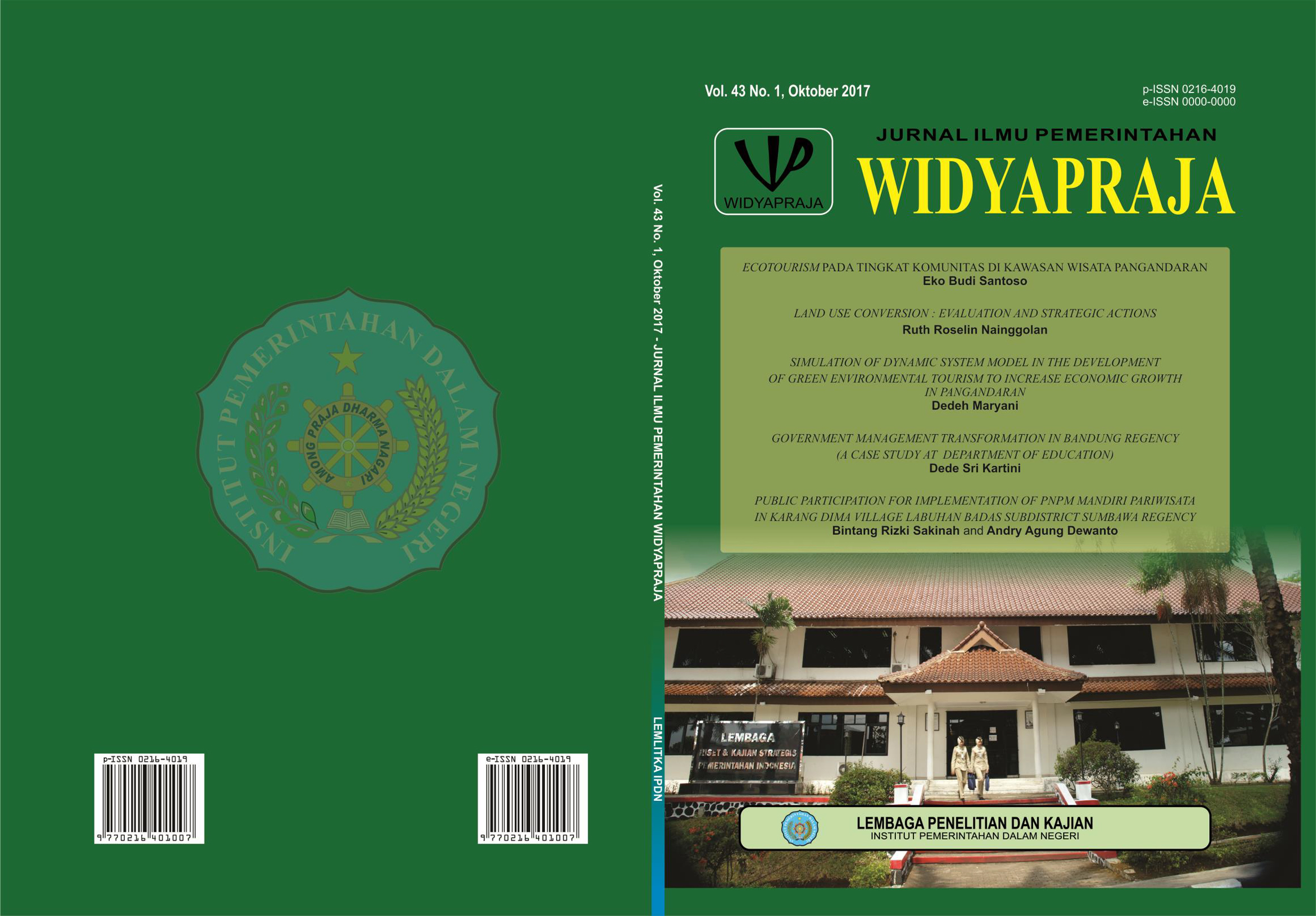PENGEMBANGAN BUDIDAYA RUMPUT LAUT DI SUMBAWA BERBASIS TEORI TRIPLE HELIX
DOI:
https://doi.org/10.33701/jiwbp.v7i1.88Kata Kunci:
Empowerment, Minapolitan, Triple Helix, Education, TechnologyAbstrak
Indonesia is a unitary state consisting of clusters of large and small islands connected by wide oceans and has the potential to support the development of local and national economies to increase foreign exchange earnings, employment, and incomes of the population. One area in Indonesia that utilize the results of the sea is Sumbawa regency of West Nusa Tenggara. Based on the Decree of the Minister of Marine Affairs and Fisheries No. KEP.32 / MEN / 2010 on Establishment of Regions Minapolitan as amended by Decree of the Minister of Marine Affairs and Fisheries No. KEP.39 / MEN / 2011, Sumbawa as the one Minapolitan of 179 Minapolitan in Indonesia by commodities seaweed seed. Minapolitan is the conception of economic development of region-based marine and fisheries based on the principles of integration, efficiency, quality and speed. There are 6 sub-district as a point of land development seaweed in Sumbawa, one of which is the village of Labuhan kuris District of Lape with seaweed production reached 29.436 tonnes with utilization area growing as many as 1328.51 hectares. Given these commodities, Sumbawa opportunity to step forward does not seem difficult. However, the potential of it did not make the state of the local community shifted from the poverty line. To overcome this, the need for conductor linking between education, technology, and labor market through the application of the theory of the Triple Helix. The main thinking triple helix theory is the importance of synergy between academic, business, and government. This paper intends to elaborate on the opportunities and challenges minapolitan as a form of education and technology alignment and an application of the theory of the triple helix in improving community development and regional competitiveness. The results of this research that needed collaborate academic, business and government to seaweed cultivation development and make empowerment and welfare local community.
Keywords: Empowerment, Minapolitan, Triple Helix, Education, Technology
Unduhan
Referensi
Buku-buku
Adisasmita, Rahardjo. 2006. Pembangunan Kelautan dan kewilayahan. Yogyakarta: Graha Ilmu
Anggadireja, J.T., A. Zatnika., H. Purwoto dan S. Istini. 2006. Rumput Laut. Yogyakarta: Penebar Swadaya
Huraerah, Abu. 2008. Pengorganisasian dan Pengembangan Masyarakat. Bandung: Humaniora
Kinseng, A.Rilus. 2011. Konflik Kelas Nelayan di Indonesia. Bogor: IPB Press
Kordi, M.H. Ghufran. 2008. Budidaya Perairan. Bandung: PT Citra Aditya Bakti
Mardikanto dan Soebiato. 2013. Pemberdayaan Masyarakat dalam Perspektif Kebijakan Publik. Bandung: CV Alfabeta
Rustiadi, Ernan, Sunsun, S, Dyah R.Panuju. 2011. Perencanaan dan Pengembangan Wilayah. Jakarta: Yayasan Pustaka Obor Indonesia
Suharto, Edi. 2006. Membangun Masyarakat, Memberdayakan Rakyat.Bandung: PT Refika Aditama
Sumodiningrat, Gunawan. 2009. Mewujudkan Kesejahteraan Bangsa. Jakarta: PT Elex Media Komputindo
Lain-lain
Syarief, Efrizal. http://www.bappenas.go.id/. Pembangunan Kelautan dalam Konteks Pembangunan Masyarakat Pesisir. Diakses 23 Oktober 2016 pukul 15.00 WIB
Buku Agropolitan dan Minapolitan, 2012. Konsep Kawasan Menuju Keharmonian. Kementerian Pekerjaan Umum, Direktorat Jenderal Cipta Karya
Dinas Kelautan dan Perikanan Kabupaten Sumbawa. 2014. Selayang Pandang Minapolitan kabupaten Sumbawa.
. 2014. Profil Desa Pesisir Kabupaten Sumbawa
Hikmah, dkk. 2012. Kajian Pengembangan Kawasan Minapolitan Perikanan Budidaya dan Pengembangan 7 Komoditas Budidaya. Jakarta: Laporan Teknis
Rohmanudin, Didin. Peran Dinas Kelautan dan Perikanan dalam Pengembangan Budidaya Rumput Laut di Sumbawa. 2015. Laporan Akhir IPDN Jatinangor.
Santoso dan Nugraha, 2008. “Pengendalian Penyakit Ice-Ice Untuk Meningkatkan Produksi Rumput Laut Indonesia. Jurnal Saintek Perikanan, Vol.3 No. 2 hal 37-34. Bandar Lampung: Universitas Lampung
Diterbitkan
Terbitan
Bagian
Lisensi
- The right of publication of all material information contained in this journal site is held by the editorial board / editor with the knowledge of the author. Journal Manager will uphold the moral rights of the author.
- The formal legal aspect of access to any information and articles contained in this journal site refers to the terms of the Creative Commons Attribution-ShareAlike 4.0 (CC BY-SA) license, which means that This license lets others remix, adapt, and build upon your work even for commercial purposes, as long as they credit you and license their new creations under the identical terms. This license is often compared to “copyleft” free and open source software licenses. All new works based on yours will carry the same license, so any derivatives will also allow commercial use.
- Each Ilmiah Wahana Bhakti Praja journal, both printed and electronic, is open access for educational, research and library purposes. Beyond this purpose, publishers or journal managers are not responsible for copyright infringement committed by readers or users.





